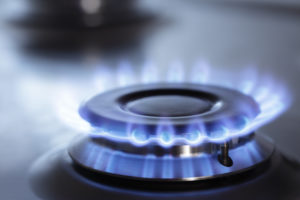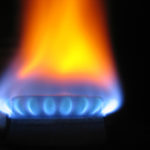 Natural gas rose for a sixth consecutive day, the longest stretch of gains in more than a year, as weather forecasting models continued to predict colder-than-average weather in key U.S. consuming areas, boosting the energy sources demand prospects.
Natural gas rose for a sixth consecutive day, the longest stretch of gains in more than a year, as weather forecasting models continued to predict colder-than-average weather in key U.S. consuming areas, boosting the energy sources demand prospects.
On the New York Mercantile Exchange, natural gas futures for settlement in December rose by 1.69% to $3.635 per million British thermal units by 15:44 GMT. Prices surged to a two-week high of $3.643 per mBtu, while days low stood at $3.562. The energy source rose by nearly 0.6% on Monday, a fifth consecutive daily gain, and extended its weekly advance to over 2.3% on Tuesday.
Natural gas continued to draw support as weather forecasts called for below-average temperatures in some of the most densely-populated U.S. areas. According to data by MDA Weather Services in Gaithersburg, Maryland, readings will be below-usual in the eastern parts of the country through November 16, after which the cold wave will spread over the Midwest through November 21, bringing below-average readings in the region.
When cold weather is expected, natural gas surges as increased electricity demand to power air-conditioning calls for more supply of the fuel, which is used for a quarter of U.S. electricity generation. Consumption usually picks up from November through March. According to the Energy Information Administration, power generation accounts for 32% of U.S. gas demand and 49% of U.S. households use the energy source for heating.
Gene McGillian, an analyst and broker at Tradition Energy in Stamford, Connecticut, commented for Bloomberg: “Temperatures are starting to drop across the Midwest and East. The forecast for the second part of November has shifted a little bit colder and the market is trying to keep the rally going.”
According to AccuWeather Inc., readings in Chicago on November 19 may bottom at 18 degrees Fahrenheit, 15 below normal, while the low in Minneapolis may be 11 degrees Fahrenheit, 13 below average.
Market players will also be keeping a close watch on EIAs weekly natural gas storage report, due at 14:30 GMT on Thursday. Early injection estimates for last week’s build range between 16 billion and 36 billion cubic feet, compared to the five-year average increase of 19 billion cubic feet and last year’s 12 billion gain during the comparable week.
The energy source advanced last week and extended gains after the Energy Information Administration reported on Thursday that U.S. natural gas inventories added 35 billion cubic feet in the week ended November 1, compared to the five-year average gain of 36 billion cubic feet and last year’s 27 billion increase during the comparable period. Total gas held in underground U.S. storage hubs rose to 3.814 trillion cubic feet, 2.9% lower than last year’s amount of 3.926 trillion. The surplus over the five-year average stockpiles narrowed by 0.1% to 1.5% from a week earlier, the report showed.
Inventories in the East Region rose by 10 billion cubic feet to 1.974 trillion and were 4.7% below the five-year average. In the West Region, stockpiles received a net injection of 3 billion cubic feet and were 8.6% above the average. Supplies in the Producing Region surged by 22 billion cubic feet to 1.285 trillion and exceeded the five-year average amount by 9.5%.





